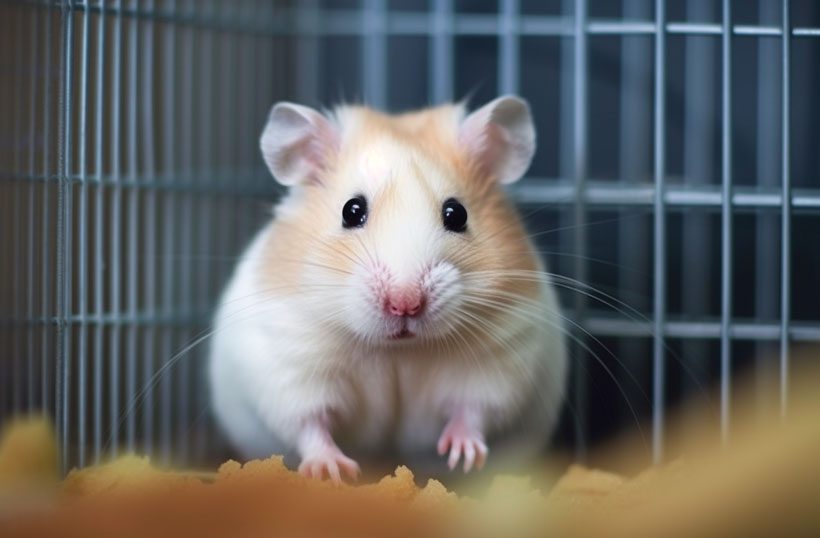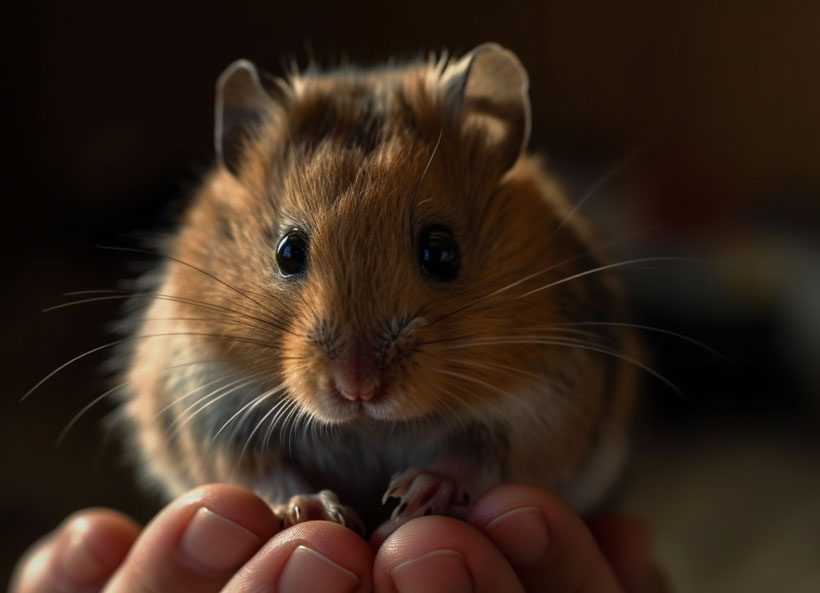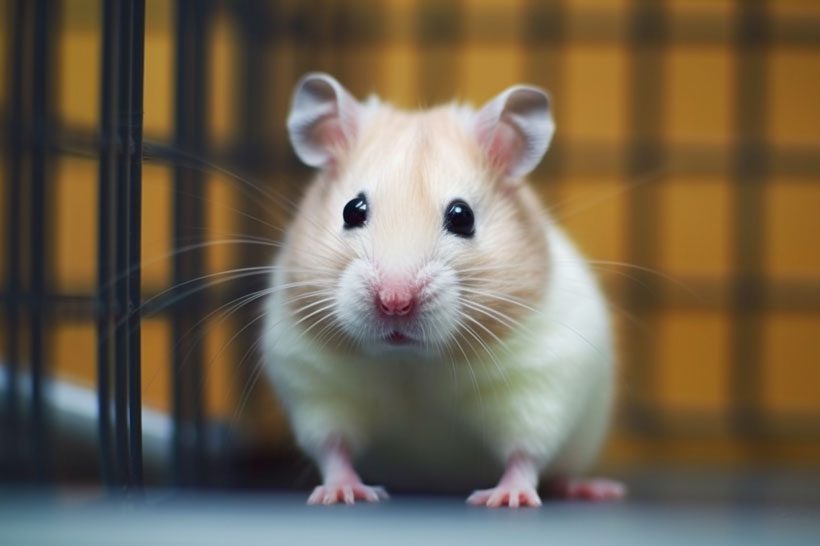How to Hold a Hamster—Everything you Need to Know!
Hamsters are cute, cuddly, and playful creatures that can bring joy to you. Besides being adorable, hamsters are also relatively easy to care for. But since they are very fragile and sensitive pets, you need to be careful while you holding them.
So, how to hold a hamster? First and most important, you have to give time to your hamster to get comfortable with your touch. In essence, you should approach your hamster slowly and gently. But be mindful that every hamster is unique, so there is no one-rule-for-all set.
In this article, we will provide a detailed guide on how to hold a hamster safely and comfortably.
How to Hold and Handle Hamster without Stressing or Harming?
Since every hamster is unique, some may enjoy being held while others may not. Moreover, don’t assume your hamster will feel comfortable with you on day one. Giving them time to feel safe in your hands would be best at the beginning.

With that in mind, let’s look at how to hold a hamster step by step.
Step 1: Prepare a Safe and Comfortable Environment
Before you attempt to hold your hamster, ensure its environment is safe and comfortable. Being predator animals, hamsters are sensitive to sudden changes.
For example, any change surrounding temperature, noise, and light will stress them. So keeping them in a quiet, dimly lit room is important.

Step 2: Approach Your Hamster Slowly and Gently
- When you want to hold your hamster, approach him slowly and gently.
- Don’t try to grab them. Instead, gently place your hand inside their cage and allow them to sniff and explore your hand. You might not know that hamsters have poor eyesight and rely on their smell and hearing senses.
- In addition, you can also talk to your hamster in a calm and soothing voice so they feel more comfortable with your touch.
Step 3: Pick Up Your Hamster Properly
Once you notice that your hamster is getting comfortable with your touch, you can try to pick them up. There are two common techniques for picking up a hamster: the scoop method and the cupping method.

1. Scoop Method
Place one hand under the belly and the other over your hamster’s back. Be mindful of supporting their entire body, as hamsters have delicate spines that can easily be injured if not held properly.
2. Cupping Method
In this method, you must place one hand over your hamster’s back and the other underneath its belly. This method can be trickier, requiring more talent and skill.
Whichever method you choose, hold your hamster close to your chest or lap, and avoid keeping them too tightly.
Step 4: Practice Patience and Consistency
- Remember that just like us, every hamster is unique too. Some hamsters may require more time than others to acclimate to being handled.
- In addition, you should also provide them with opportunities to rest and hide away in their cage if they become anxious or overstimulated by your touch.
Step 5: Watch for Signs of Stress or Discomfort
We all know that hamsters are prone to stress and anxiety. So being a responsible pet parent, you must watch for signs of stress or discomfort in your hamster. Don’t attempt to hold them while they are stressed or uncomfortable.

Step 6: Lure with Treats
Coaxing your hamster with treats can be an effective way to get them to feel more comfortable with handling. Offering a small piece of their favorite treat, such as a piece of fruit or vegetable, can help to create a positive association with being handled.
Step 7: Refrain from Making Sudden Movements or Loud Noises
Avoid sudden movements if you want to hold your furry friend gradually and carefully.
Step 8: Respect Your Hamster’s Boundaries
Although handling your furry friend regularly is important, respecting their personal space and boundaries is equally important. Hamsters are self-reliant pets that may desire privacy sometimes.
What Precautions Should You Take When Holding A Hamster?
It is important to take precautions to ensure your and your hamster’s safety. Here are some tips to keep in mind:

- Be gentle: Make sure to hold your hamster gently and carefully. Moreover, it would be best to never squeeze or apply pressure on them.
- Not holding your hamster while he sleeps: You might already know Hamsters are night owls. So chances are you might want to hold them in the daylight, wherein they might be resting. If you need to have your little buddy, ensure he is alert.
- Do not lift him high up: Whenever you want to hold your hamster, don’t lift him high up the floor. It will scare them. So don’t lift him up more than a few inches. You keep the risk of injury to a minimum if you hold him close to the ground.
- Do not punish him: Chances are your hamster might bite or scratch you if you make him anxious while holding. So if he does that while holding him, do not punish him because they are inept at understanding punishment.
- Be mindful of children: Although hamsters can be wonderful pets for children, it is essential to supervise them when handling their furry friends. Kids may not understand how fragile hamsters are and might unintentionally harm them.
- Wash your hands: As highlighted previously, hamsters have a powerful sense of smell and can become agitated by strong odors. While washing hands before holding a hamster is important, it is likewise crucial to not use handwash or soaps with a strong smell.
- Avoid holding him by the tail or appendage: While you might be tempted to grab your hamster’s little tail, this can be very painful and dangerous for your pet. Also, do not scruff your hamster or pick him up by an appendage.
- Avoid holding your hamster near other pets: Being predator animals, hamsters get anxious when they see other pets, such as cats or dogs. So it is important to keep other pets away from your hamster when holding him because it will frighten them.

FAQs
Below are some of the common questions regarding holding a hamster.
Q: Can I hold my hamster every day?
Yes, you can hold your hamster every day but make sure you are not stressing them out or holding them for too long. It is important to give them plenty of time to rest and burrow in their cage.
Q: How long should I hold my hamster?
Initially, hold your hamster briefly; less than a minute or so is good. You can gradually increase the duration as they become more comfortable with you. However, it’s important not to hold them too long, as they may become stressed or agitated.
Q: What should I do if my hamster escapes while I’m holding them?
If your hamster escapes from your hold, it’s important to remain composed and avoid chasing them. Instead, entice them back into their cage by offering treats. If they do not return, setting up a trap using a small box and some food can help catch them.
Bottom Line
In conclusion, holding a hamster can be a pleasing and enjoyable experience. However, you must be mindful of signs of stress and anxiety. Follow the steps above to hold your hamster safely and comfortably.
Moreover, being a responsible pet parent, provide the hamster with plenty of enrichment and playtime to keep them happy and healthy. With patience, consistency, and a little love, you can build a strong relationship with your furry little friend that will last a lifetime.





